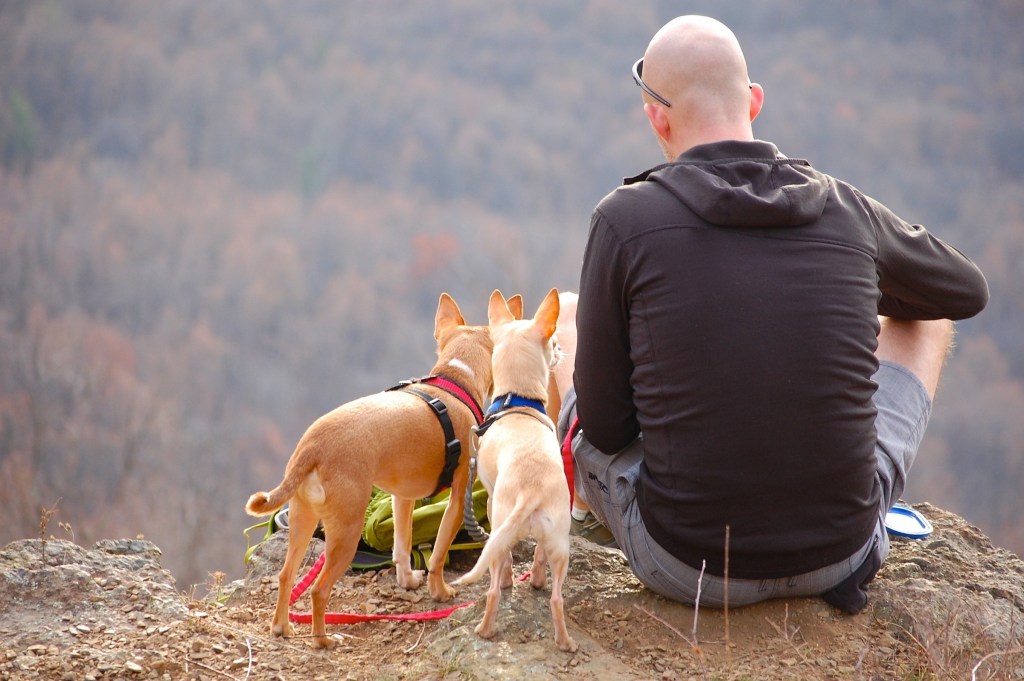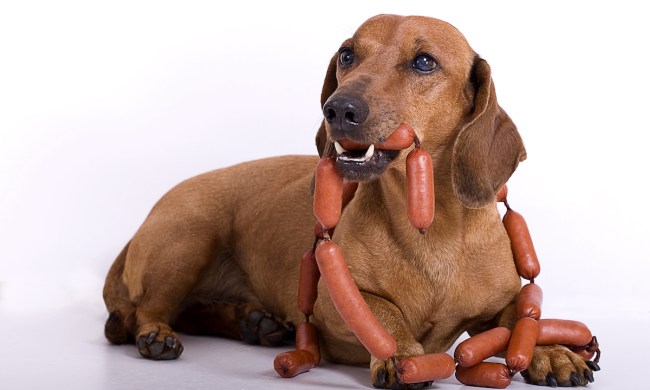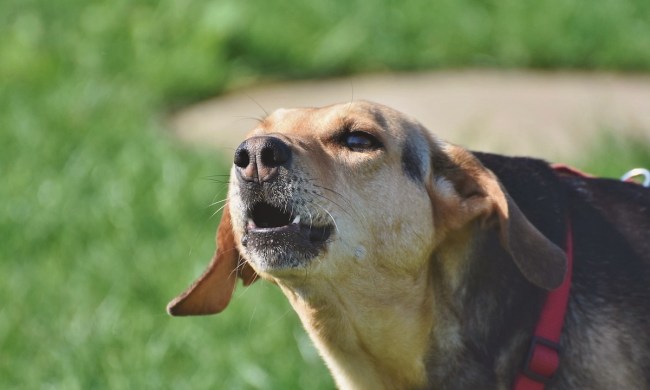When packing up all your dog’s hiking gear before heading out on an adventure, it can be tricky deciding whether you’ve gathered everything you need. It’s impossible to predict every detail of your hike and what you might encounter, but it’s also better to be safe than sorry. So, what dog hiking accessories should you invest in?
Although there are a few basics to bring no matter where you’re going, the specifics of your trip will determine the rest of your packing list. You wouldn’t bring multiple jackets for your dog if you were heading to the desert, right? Luckily, with a little planning and a mental checklist, you’ll be all packed and ready to go in no time. Don’t forget to pack for yourself!

Essential dog hiking gear
From the stuff you’ll definitely need to the things you hope you won’t, these are the most important hiking accessories for dogs. They’ll certainly make your life easier, too!
First-aid kit
A canine first-aid kit will come in handy in a variety of situations, from a brush with a wasp to a cut from a sharp branch. A ready-made kit will also include a first-aid booklet to walk you through anything you need to know in an emergency. These kits usually come in a bag that can be carried or stowed away easily inside a larger bag. Don’t forget to replenish your kit if you already have one or to pack any of your pup’s medications while you’re on this step!
Hiking leash and harness
Before heading out, make sure you trust your leash and harness to keep your fur baby secure. Many hikers enjoy using a hands-free leash, which lets your dog have some space to roam while allowing you some freedom, too.
You can also look for thicker leashes, braided leashes, or even reflective leashes to give your dog that extra visibility. As for harnesses, make sure you properly fit and adjust the one you choose before trying it out on a hike. You should feel confident that your dog can’t slip out in case he gets distracted on your adventure.
Visibility accessories for your dog
Even if you don’t plan on being out at night, you’ll need to be able to keep track of your dog at all times. For daytime trips, consider purchasing accessories in neon colors for maximum visibility; you can also buy reflective collars or leash lights for any nighttime rendezvous.
Portable water bowl
No matter where you’re headed or for how long, you’ll need to bring water for your buddy. A portable water bowl will make rehydrating even easier for your pup, and you’ll love that it folds up for easy storage.
Airtight food storage
Although you can use another collapsible bowl for feeding your pet, you’ll still need to store the food while you’re out adventuring. Dog food travel bags are made with pet-safe materials that keep the kibble inside dry and safe from any outside nastiness. The extra pockets make great homes for easy-to-reach treats.
Poop bags
Although dog waste is technically biodegradable, you should always pick up after your pet no matter where you are. Especially if your pup decides that the middle of a trail is the perfect place to relieve himself — other hikers will surely appreciate it.
Dog hiking accessories for weather and terrain
The details of the trip often determine the contents of one’s backpack, and that’s true for dogs, too. Here are some hiking accessories to consider depending on where you’re going:
Dog snow gear
If you’re ready for a snowy hike, make sure your dog is equally prepared for the cold. Especially if he’s not a breed that originates in cold weather, you’ll want to bring a cold-weather jacket to keep him warm. If the forecast calls for rain, you can opt for a rain jacket, too! Cold-weather shoes for dogs are another great investment if your pup doesn’t mind them.
For warmer adventures with your dog
Keeping paws safe from heat is just as important as protecting them from the cold. Some comfy shoes for your pup will do just the trick. Some paw balm is also a good idea, especially if shoes aren’t your dog’s favorite.
For protecting noses and ears from the sun, dog sunscreen will be exactly what you need. Remember to keep your best friend extra hydrated in the heat, especially on more arduous hikes.
For hikes near water
If your dog likes to swim, investing in a canine life jacket is a smart choice. Water-friendly toys will give your pup a new way to play, too — if he’s not too tired from the hike!
Overnight trips with your dog
If you’re spending the night out in nature, it might reassure your dog to have some small comforts from home, like a favorite toy or blanket. You can shop for dog sleeping bags at many outdoor stores, though you know your dog’s sleeping habits best.
It may sound like a lot of work at first, but planning for a hike with your furry friend will ensure a great time for both of you. You’ll be able to relax and enjoy each moment knowing you have everything you need. Happy trails!




